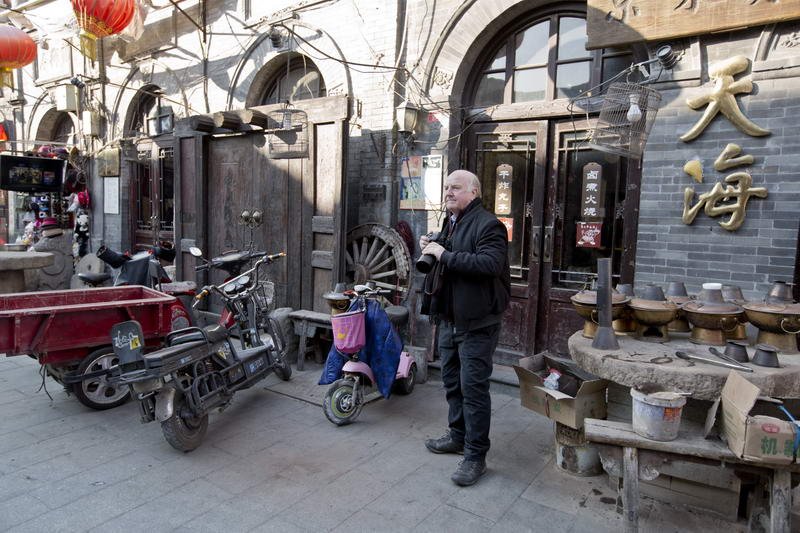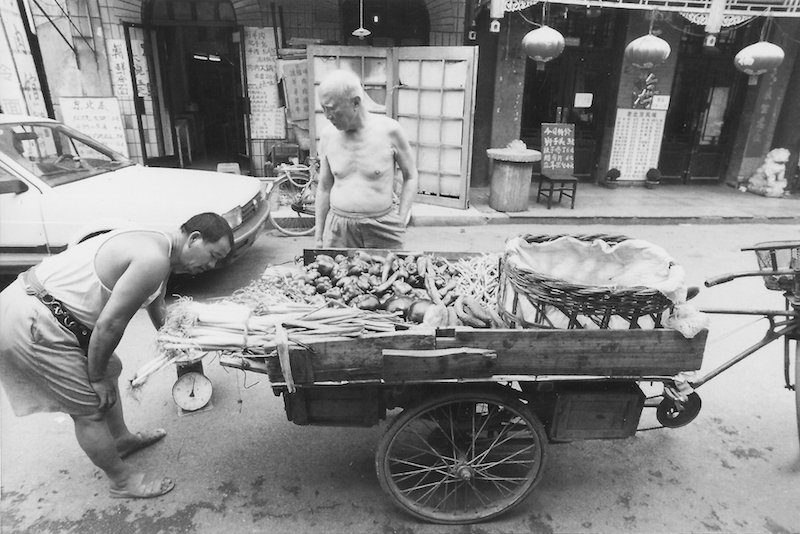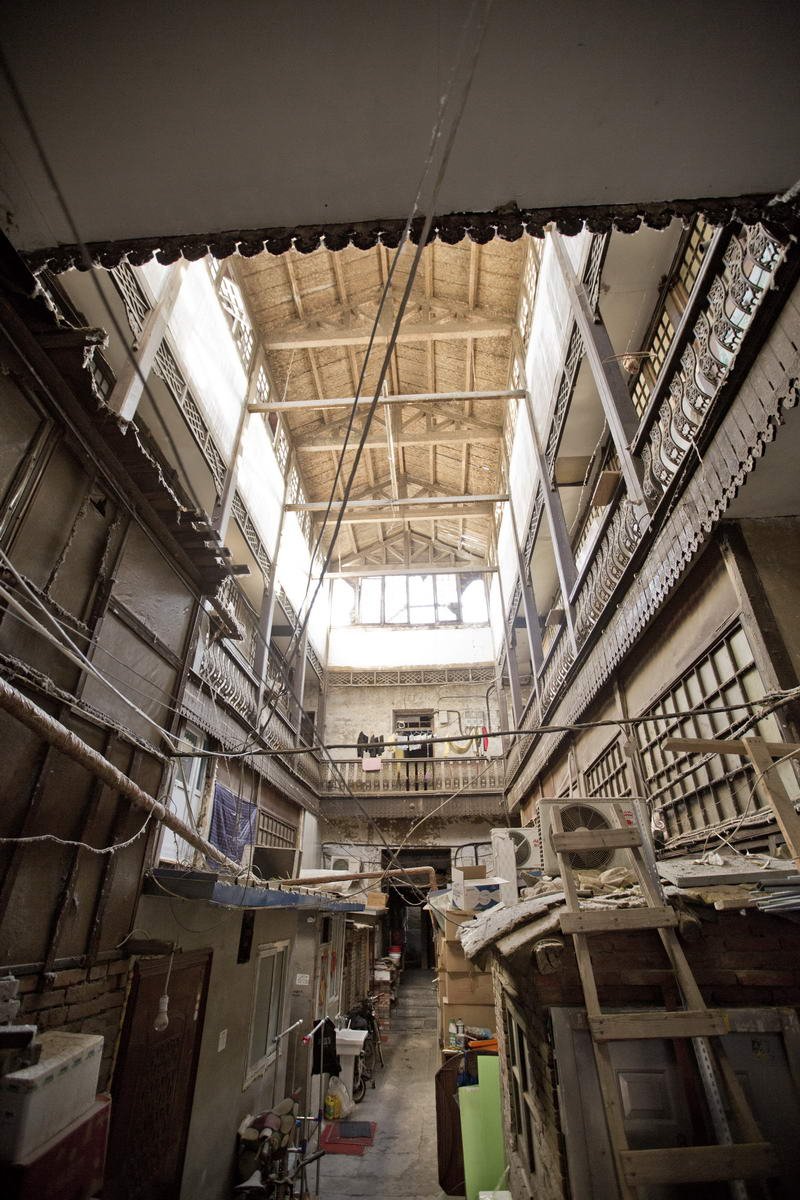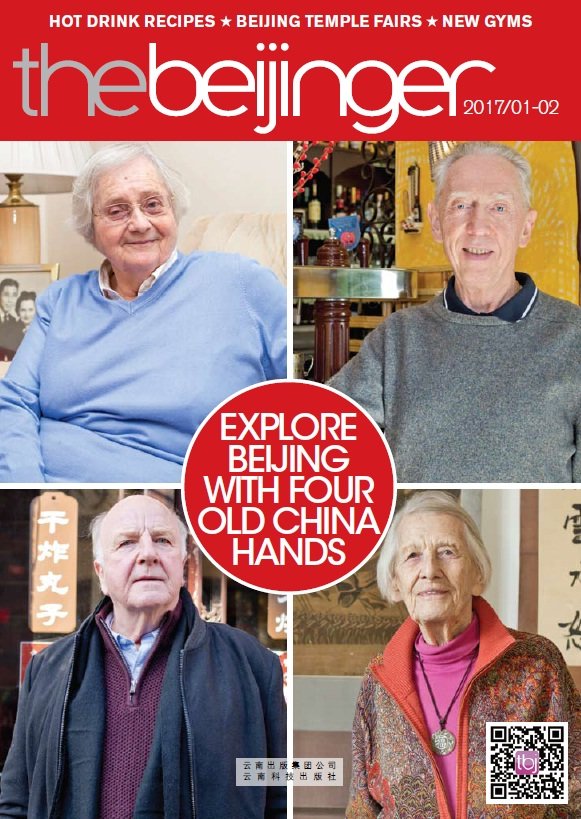A Scotsman's Hutong Haven: Exploring Beijing’s Alleys with Old China Hand Bruce Connolly
It doesn’t take long for a conversation with Bruce Connolly to veer into a maze of tangents, akin to walking a winding route through the hutongs he adores. This is especially true when the Scottish journalist and photographer invites you to follow him through his favorite such alleys in the Dashilar area.

“Oh look at that rooftop! And oh, there’s a birdcage! And right along here there used to be a Mongolian bar!” Connolly, a broadcaster at Radio Beijing AM 774, says during a recent visit to Dashilar West Hutong, along with the adjacent Taitou and Yangmeizhu alleys, and more.
When we begin at Dashilar West, Connolly’s boundless enthusiasm and wry sense of humor both become immediately apparent, as he says: “This is a pedestrian street, but there’s bloomin’ bicycles parked all over it. It’s a Chinese version of a pedestrian street, at least.”
READ: Gilbert Van Kerckhove: The Belgian Engineer Who Played a Key Role in Beijing’s Olympic Dream
From there he gestures to Tianhai Restaurant – a Beijing institution famous for its tofu and saucy noodles – that stands as one of the few landmarks that remain unchanged since Connolly snapped a photo of it back in 1999. He’s been here longer than that, arriving first for a visit in 1987, by rail from Glasgow to Hong Kong, while he was still working as a freelance broadcaster for the BBC. He then returned in 1992 before crisscrossing the country, camera in hand – from “Xishuangbanna to Everest” as he writes on his LinkedIn – eventually working as a tour guide in Beijing in 1998, before beginning his ongoing stint as a feature broadcaster, interviewer, and photographer at Radio Beijing AM 774 in 2004.

While he may be better known as a journalist, some of Connolly’s most memorable Beijing moments happened as he took people on tours of Dashilar. He brought one such group from the Royal Scottish Geographical Society (for which he has also worked as a public speaker) on that hutong journey, showing the tourists the wholesale markets, snack stands, and other aspects of everyday life in the alleys. A Chinese guide that accompanied him was aghast at the itinerary, saying: “Bruce, why are you showing them this? It’s the old China,” to which Connolly replied: “Yes! That’s the part I love!”
Of course, Connolly is quick to admit that he empathizes with lao Beijingers who perceive the hutongs differently from curious foreigners like him, and that the rugged, vibrant hutong lifestyle not only makes for great photos, but also hard living.
READ: An Interview With Isabel Crook: Anthropologist, Teacher, and Revolutionary
With that in mind, Connolly brings us to a seemingly nondescript building on Qianmen Xiheyan Jie. However, once we enter, we’re struck by its expansive, two-story interior, featuring opulently curving wooden pilasters, a dynamically designed iron fence along the balcony, a sharply arched roof, and rows of upper windows that let the light pour in. This was once a gallery at the heart of the first Beijing stock exchange, founded in 1918, and the worldly trading that took place there is reflected in its East-meets-West architecture. And while much of that distinctive design remains intact, it’s clear that the site has been left in disarray, as Beijingers now reside in its various rooms but leave the gallery’s balcony and main floor looking mostly abandoned, except for some stray rubbish or the odd bits of clothing hanging up to dry.

“The people living here aren’t squatters, they’re legitimately paying rent and I understand that they need to fix it up,” Connolly says, adding: “But I hope that they renovate it carefully, so that its unique architecture can be preserved, just like some of the other redesigns in Dashilar. I think this area has maintained its history so much more than other hutong neighborhoods.”
READ: Jane Su: Wisconsin Native Discusses What it Was Like to Move to China in 1957
As we step back outside, Connolly gestures at the curving neighboring hutong rooftops, then the high rises that dominate the rest of the horizon. “I love this part of Beijing so much – old and new architectural styles, bikes parked in big jumbles, people out with their birds and puppies, talking to their neighbors. I love how all the contrasts are all cluttered together.”
This article originally appeared in the January/February issue of the Beijinger, which you can read here via Issuu, via the PDF here, or in hard copy at all of your favorite venues across town.
More stories by this author here.
Email: kylemullin@truerun.com
Twitter: @MulKyle
WeChat: 13263495040
Photos: Uni You, Bruce Connolly








